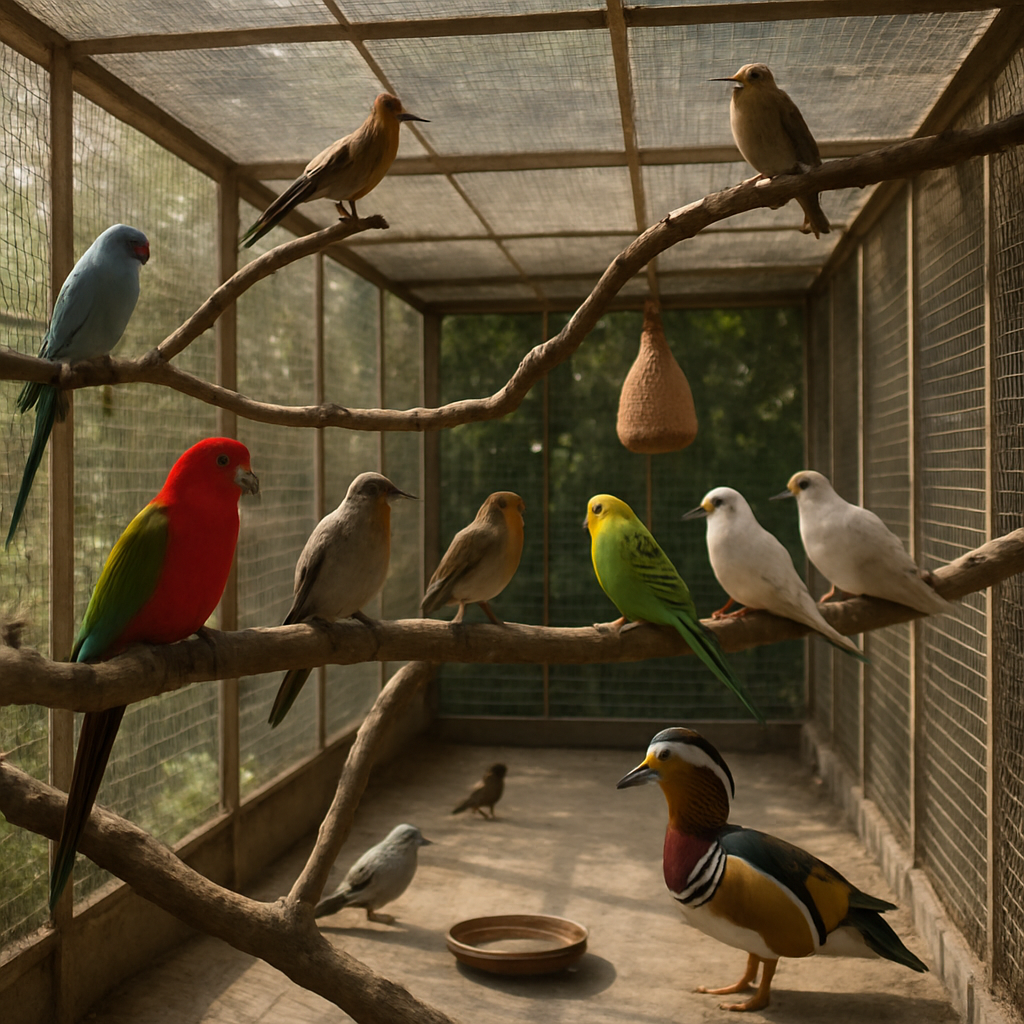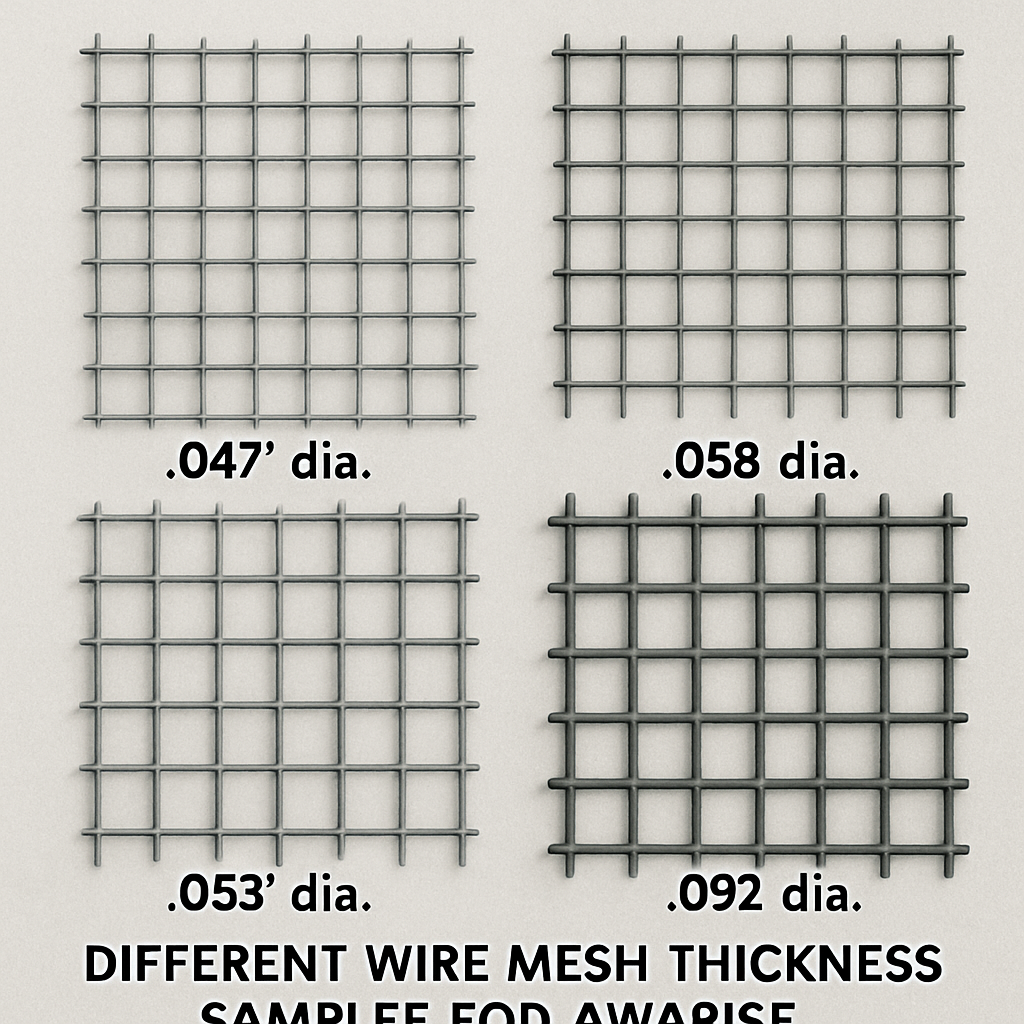Building a bird aviary is an exciting journey for new pet owners. It’s a chance to create a safe haven for your feathered friends. But where do you start?
Choosing the right materials is crucial. One key element is the welded aviary mesh thickness. This ensures your birds are secure and comfortable.
Different bird species have different needs. Small birds like finches require a thinner mesh. Larger birds, such as macaws, need something sturdier.
Understanding these differences can make all the difference. It helps in creating a safe and happy environment for your birds.
In this guide, we’ll explore the recommended mesh thicknesses for various bird species. We’ll also discuss other important factors in aviary construction.
Let’s dive into the world of aviary construction. Your birds will thank you for it!
Why Mesh Thickness Matters in Aviary Construction
Mesh thickness plays a pivotal role in aviary construction. It's not just about keeping birds inside. It also involves keeping potential threats out.
A suitable mesh thickness provides the necessary strength to withstand the birds’ strength and behaviors. Birds like parrots have strong beaks, capable of damaging weaker materials.
Moreover, the right thickness ensures safety by preventing injuries. Thicker mesh prevents birds from getting their feet or beaks stuck.
Choosing the correct thickness also helps protect from external predators. This aspect is especially important in outdoor bird aviaries, where wild animals may pose a risk.
In summary, mesh thickness is crucial for:
- Preventing escape
- Ensuring bird safety
- Resisting damage from strong beaks
- Protecting from predators
Understanding these factors helps you make an informed decision. Proper mesh thickness makes your aviary a secure retreat for your birds.
Key Factors to Consider When Choosing Aviary Mesh
Choosing the right aviary mesh involves several key factors. Each factor plays a vital role in ensuring your birds' safety and comfort.
First, consider the type of birds you have. The species and size of the birds dictate the suitable wire mesh thickness. Larger birds, for instance, need thicker mesh.
Next, the environment is crucial. Outdoor aviaries face harsh weather conditions, requiring more durable materials. This prevents rust and wear and tear.
Ventilation and visibility are also important. A mesh that allows ample air flow and a clear view is ideal. It helps maintain a healthy atmosphere inside the aviary.
When choosing aviary mesh, pay attention to:
- Bird species and size
- Environmental conditions
- Ventilation and visibility requirements

In summary, evaluating these factors leads to a better living space for your birds. Their health and safety greatly depend on these considerations.
Mesh Thickness Recommendations by Bird Size and Species
Finding the right mesh thickness is essential for a safe bird aviary. Let's dive into recommendations based on different bird sizes and species.
Small birds like finches, canaries, and budgies have distinct needs. Their safety relies on a mesh that's thin but durable.
Medium birds such as cockatiels, conures, and parakeets require a bit more strength. These birds are curious and might chew on the mesh.
Large species like macaws, cockatoos, and African greys need robust materials. Their powerful beaks can damage weaker mesh easily.
Small Birds: Finches, Canaries, Budgies
For small birds, the mesh thickness should be between 1.2mm and 1.6mm. This thickness balances safety and visibility.
Finches and canaries are delicate. A thinner mesh prevents them from getting stuck. It also supports their playful nature.
Budgies need something sturdy but not heavy. They love to explore. Their safety and comfort depend on the right thickness.
Mesh Recommendation for Small Birds:
- Thickness: 1.2mm - 1.6mm
- Material: Stainless steel or powder-coated galvanized wire
- Space: 1/2 inch spacing

Medium Birds: Cockatiels, Conures, Parakeets
Medium-sized birds need a mesh thickness of 2mm to 2.5mm. This accommodates their curious and playful behavior.
Cockatiels and conures are active explorers. The right mesh thickness prevents damage to their environment.
Parakeets, with their vibrant energy, require durable, non-toxic materials. Safety and health are top priorities.
Mesh Recommendation for Medium Birds:
- Thickness: 2mm - 2.5mm
- Material: Galvanized steel, ideally with a rust-resistant coating
- Space: 3/4 inch spacing

Large Birds: Macaws, Cockatoos, African Greys
Large birds need a strong mesh, often 3mm or thicker. Their powerful beaks test the aviary's durability.
Macaws are known for their strength and might chew through weak mesh. A thicker mesh safeguards against escapes.
Cockatoos are notorious for their curiosity. Choosing an appropriate thickness avoids damage and ensures longevity.
African greys, with their intelligent curiosity, need sturdy materials. This ensures their environment remains intact.
Mesh Recommendation for Large Birds:
- Thickness: 3mm or more
- Material: Heavy-duty stainless steel, with high rust resistance
- Space: At least 1 inch spacing

Choosing the appropriate mesh thickness based on bird size ensures a secure, enjoyable habitat. This investment promotes a vibrant life for your feathered friends.
Mesh Spacing: Preventing Escapes and Injuries
Mesh spacing plays a vital role in keeping birds safe within an aviary. It prevents escapes and ensures birds don't get caught.
For small birds, a tight spacing of about 1/2 inch is ideal. It blocks escape routes, allowing birds to flutter safely.
Medium birds thrive with a 3/4 inch spacing. This offers security while still giving them the freedom to explore.
Large birds need a bit more space—at least 1 inch. This prevents any damage while ensuring the mesh withstands their strength.
Key Spacing Recommendations:
- Small Birds: 1/2 inch spacing
- Medium Birds: 3/4 inch spacing
- Large Birds: 1 inch or more spacing

Proper mesh spacing ensures your aviary is both a secure and comfortable haven for your beloved birds.
Aviary Construction Materials: Pros and Cons
When it comes to aviary construction, choosing the right materials is crucial. It directly affects the safety, durability, and longevity of the aviary.
Stainless steel is a top choice for aviaries. It's durable, resistant to rust, and requires little maintenance. However, it can be costly.
Galvanized wire is more budget-friendly. It's a popular option, though it might need additional treatment to resist rust over time.
PVC-coated wire offers protection against weathering. It's also gentle on bird beaks and feet. The downside is potential degradation in harsh climates.
Pros and Cons of Common Materials:
- Stainless Steel: Durable, rust-resistant; high cost.
- Galvanized Wire: Economical, versatile; may rust without treatment.
- PVC-coated Wire: Protects birds, weather-resistant; prone to degradation.

Ultimately, the choice of materials should prioritize the well-being and safety of your feathered companions while considering your budget constraints.
Indoor vs. Outdoor Bird Aviaries: Material and Thickness Considerations
Building an aviary requires thoughtful planning, especially when considering its location. Whether indoors or outdoors, each setting presents unique challenges and benefits.
Outdoor aviaries need materials that can withstand different weather conditions. Stainless steel and well-treated galvanized wire mesh are ideal, as they resist rust and ensure durability against environmental elements.
Indoor aviaries, on the other hand, enjoy more controlled conditions. Thus, materials like lightweight wire mesh can be safely used due to lesser exposure to moisture and harsh weather.
Considerations for Aviary Location:
- Outdoor Aviaries: Require weather-resistant materials.
- Indoor Aviaries: Offer more flexibility in material choices.
- Aviary Thickness: Influenced by location and bird species.

Carefully evaluate your location choice as it impacts the materials and construction of the aviary, ensuring a safe haven for your birds.
Safety, Maintenance, and Longevity Tips for Your Aviary
Ensuring your bird aviary is safe is a top priority. Regular inspections for wear and tear can prevent unforeseen accidents and secure your feathered friends.
Maintenance goes beyond simple cleaning. It involves ensuring that the mesh remains intact and the structure retains its stability over time. Replace any compromised materials promptly to avoid hazards.
For an aviary to last, use high-quality construction materials. Stainless steel mesh and rust-resistant coatings can significantly extend the aviary's life, especially in outdoor settings.
Key Tips for Aviary Care:
- Regular Inspections: Check for damage and wear.
- Prompt Repairs: Fix issues immediately.
- Quality Materials: Invest in durable materials.
- Routine Cleaning: Prevents bacteria and parasites.

By following these best practices, you can ensure your aviary remains a safe, clean, and inviting environment for your beloved birds.
Innovations and Trends in Aviary Mesh and Construction
Aviary design has seen exciting advancements. New materials and techniques enhance safety and comfort for our feathered friends.
Lightweight yet strong alternatives to traditional mesh are now popular. These materials offer easy maintenance and increased durability.
Latest Trends to Explore:
- Eco-friendly Materials: Sustainable options gaining popularity.
- Smart Technology: Monitors temperature and humidity for optimal conditions.
- Custom Designs: Tailored solutions for individual bird needs.

As technology advances, aviary construction continues to evolve. These innovations offer pet owners exciting possibilities for creating secure and stimulating habitats.
Frequently Asked Questions About Welded Aviary Mesh Thickness
Choosing the right mesh thickness raises common questions. Addressing these helps ensure a safe aviary environment.
One frequent inquiry involves appropriate thickness for different bird species. It's vital to match thickness to bird size and strength.
FAQs:
- What thickness is best for small birds? Aim for 1.2mm to 1.6mm.
- Do medium birds need different thickness? Yes, 2mm to 2.5mm works well.
- How about for large birds? Use 3mm or more for these species.
Understanding these elements aids in creating a safe haven for your birds. Answering these common questions helps make informed aviary choices.
Conclusion: Building a Safe and Happy Home for Your Birds
Providing a secure, enriching habitat ensures your birds' well-being and happiness. Selecting the correct welded aviary mesh thickness plays a crucial role in this process.
Combining the right materials with thoughtful design creates a safe haven. Your birds will thrive in an aviary built with care and understanding. Prioritize safety, comfort, and joy, and your birds will flourish in their new home.
from Talis Us - Blog https://ift.tt/7Z45yve










0 comments:
Post a Comment